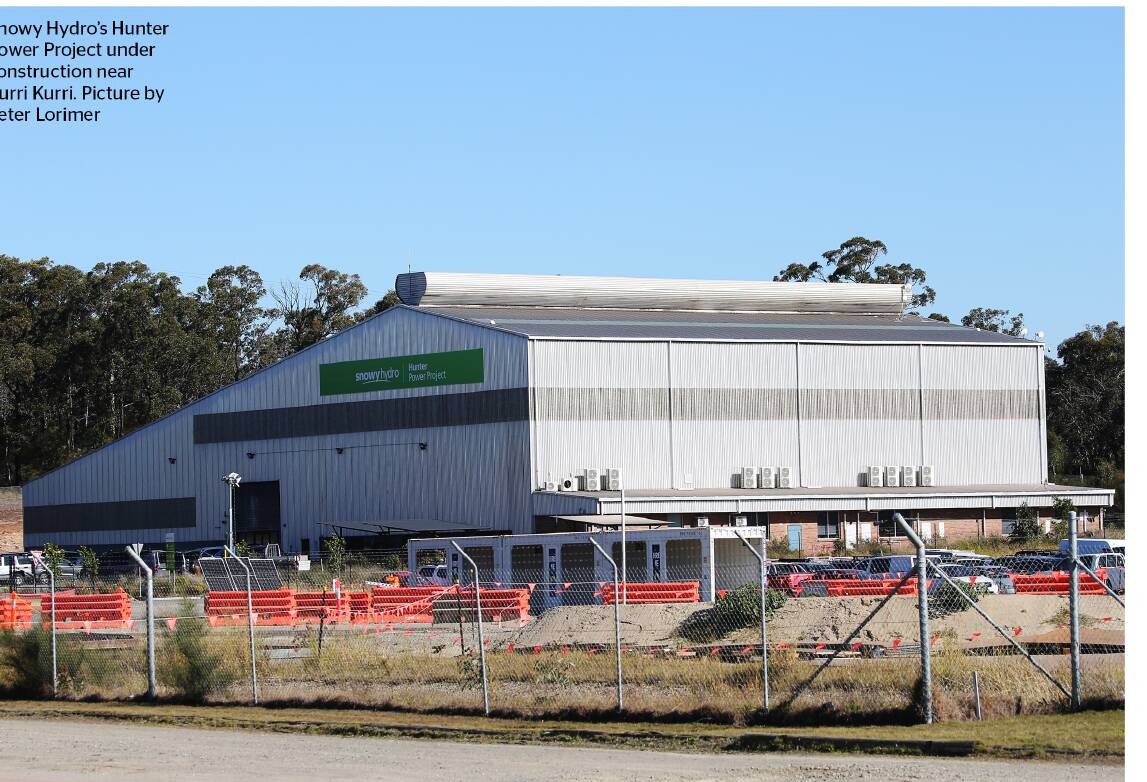
For almost 700 workers, dust and heat are on the menu every day at the old aluminium smelter site at Loxford, near Kurri Kurri.
A gas-fired power plant is being built, including 24 kilometres of gas storage in looping pipes. A dedicated 21 kilometres lateral pipeline will bring fuel from the Hexham end of the Newcastle-Sydney gas pipeline.
All of which will be capable of running the plant for 10 hours, only. After that, should the NSW electricity grid need nourishment for longer, a fleet of trucks will be mobilised to deliver diesel from sources across the Lower Hunter, like emergency blood supplies to a major disaster.
Yet Snowy Hydro, the plant's owner, says the Loxton facility will run for barely 4 per cent of the time in any year. It will need fewer than 20 operational staff. But Snowy Hydro is pleased with its investment, even at the blow-out cost, all-up, of $1.5 billion.
Scratch your head, certainly. A new power generator to run on natural gas, a greenhouse gas, a fossil fuel? Backed-up by diesel, an even worse polluter? At a time when the nation is committed to conversion to renewables, with the cost of solar and wind generation driving coal-fired power stations out of business? With a growing number of large batteries, many in the Lower Hunter, being built as back-ups? And hydrogen as a fuel source appearing on the horizon?
Scratch your head, until it bleeds.
Down at Snowy Hydro, however, the smarts are licking their lips for the day the Loxton plant is ready to burn and boil, for its miniscule workforce to press the go button. For Snowy Hydro, the lure is the chance of making mega bucks from the electricity price spikes that seem part and parcel of the Australian electricity market in the many years required for the national energy transition.
Take Sunday, January 21, eight days ago. It was a hot day across NSW and a cool change for Sydney, the Lower Hunter and the Illawarra wasn't expected until the wee hours of Monday morning. Throughout that day, air-conditioners hummed, powered by solar roof tops and solar farms (delivering 55 per cent of supply at 2pm), by coal-fired power stations (36 per cent) and by wind turbines (12 per cent). At 6pm, however, the sun started to clock off for the day, putting NSW solar to bed. Coal power stations still chugged away. But so did air-conditioners into the heat of the night.
Across NSW alarm bells started ringing in the supply rooms of the power retailers. Their traders hit the energy markets searching for short-term supply contracts to cover demand from customers battling the heat.
At 8pm the spot price for electricity in NSW peaked at $9570 per megawatt hour (MWh), a massive price surge, way beyond the average January price of $78MWh, according to the Australian Energy Market Operator's online data.
Snowy Hydro entered the market eagerly. It pulled levers to send water storming down the spillway from its Tumut dam, spinning hydro turbines, and selling their output at bumper prices.
Yet, until next spring, after the snow melts, water in the Tumut dam won't be replenished. Hence, the Hunter Power Project (HPP) at Loxton.
If the HPP plant was ready to roll on Sunday, January 21, 10 hours of gas locked in, Snowy Hydro would have entered the market with an even broader smile. If needed, it could have continued nourishing the grid on Monday 22 by using diesel. By Monday evening it would have refilled its gas storage lines. Nothing yet, neither hydro or batteries, could enable such a lucrative energy market play.
It's deeply ironic. The conversion to renewables gives clever players, such as Snowy Hydro, a window to burn fossil fuels for super profits. In stockmarket terms this is called arbitrage, taking advantage of imperfect markets to make an easy buck.
And for the Lower Hunter?
Another fossil-fuel, greenhouse-gas generator, a handful (only) of permanent jobs, and the potential of big profits for another out-of-towner.
-
Phillip O'Neill is professor of economic geography at Western Sydney University.







